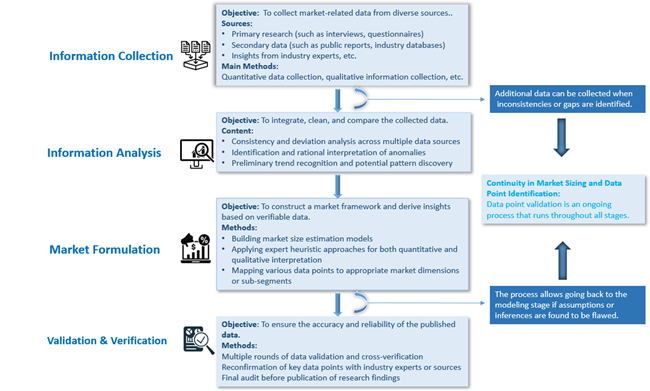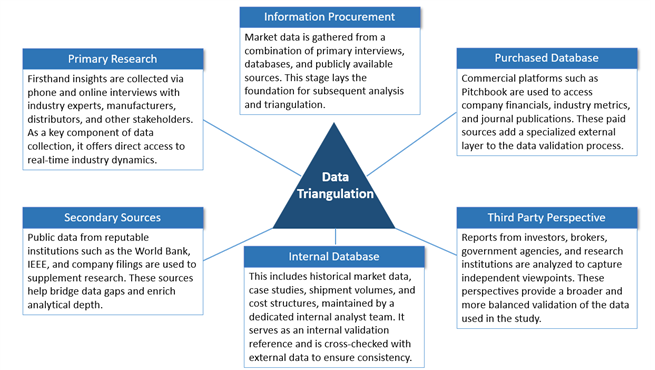CMP, also known as Chemical Mechanical Planarization, is a process that
uses chemical corrosion and mechanical force to planarize silicon wafers or
other substrate materials during processing. CMP equipment includes three main
modules: polishing, cleaning, and transfer. During operation, the polishing
head presses the wafer’s surface to be polished against a rough polishing pad.
Through the coupling of chemical corrosion from the polishing slurry, particle
friction, and polishing pad friction, global planarization is achieved.
Market Overview:
According to LookWhole Insight, the global CMP Materials market is projected to reach USD 3641.51 Million in 2024. It is expected to grow to USD 7632.56 Million by 2033, registering a compound annual growth rate (CAGR) of 8.57% during the forecast period (2025–2033). - LookWhole Insight
At present, integrated circuit devices generally adopt multi-layer
three-dimensional wiring, so multiple cycles are required in the front-end
process of integrated circuit manufacturing. In this process, CMP technology is
a key process to achieve wafer surface planarization during integrated circuit
(chip) manufacturing, and an important step in advancing process technology
node upgrades.
In the field of integrated circuit manufacturing, the chip manufacturing
process can mainly be divided into thin film deposition, CMP, lithography,
etching, ion implantation, and other process steps according to technical
division of labor. Among them, CMP technology is one of the essential processes
in wafer manufacturing and is crucial for high-precision and high-performance
wafer production.
The integrated circuit industry chain can be divided into four major
sectors: wafer manufacturing, integrated circuit design, front-end chip
manufacturing, and packaging and testing. Except for the integrated circuit
design sector, the other three sectors all have CMP application scenarios.
CMP materials, according to different functions, are mainly divided into
polishing slurry, polishing pads, post-polishing cleaning fluids, conditioners,
etc. The main functions of polishing pads are to store and transport polishing
slurry, remove debris, and maintain a stable polishing environment. In the
chemical mechanical polishing process, polishing slurry can form an oxide film
on the wafer surface, which is then removed by abrasive particles in the slurry
to achieve the polishing effect. Cleaning fluids are mainly used to remove
impurities such as micro-dust particles, organic matter, inorganic matter,
metal ions, and oxides remaining on the wafer surface.
Polishing pads and polishing slurry together account for more than 80% of
the market. According to the market share of CMP segmented polishing materials,
polishing slurry accounts for 49%, polishing pads account for 33%, totaling
more than 80%.
The following is an introduction to the types of CMP polishing slurries:
|
Product |
Purpose |
Application |
Features |
|
Copper CMP Slurry |
Widely used in the manufacturing process of logic chips at 130nm and below technology nodes, also used to some extent in memory chip manufacturing. |
Mass production in logic chips at 130–14nm nodes, as well as 3D NAND and DRAM chips. |
High copper removal rate, controllable dishing, low defects. |
|
Barrier Layer CMP Slurry |
Used for removal and planarization of barrier layers in the copper interconnect process of integrated circuits. |
Mass production in logic chips at 130–14nm nodes, as well as 3D NAND and DRAM chips. |
Excellent copper corrosion resistance, adjustable removal rates for dielectric materials (including low-k and ultra-low-k), flat wafer surface after polishing, low defect rate. |
|
Tungsten CMP Slurry |
Mainly used in memory chip manufacturing, only in certain process steps for logic chips; used for planarization of tungsten plugs and vias in IC manufacturing. |
Mass production in logic chips, 3D NAND, and DRAM chips. |
Adjustable tungsten removal rate and tungsten-to-dielectric selectivity. |
|
Dielectric Layer CMP Slurry |
Used for removal and planarization of interlayer dielectrics and metal-dielectric layers in IC manufacturing. |
Used in IC manufacturing for interlayer dielectric and metal-dielectric removal and planarization. |
High removal rate, high planarization efficiency, low defects, and low cost. |
|
Silicon CMP Slurry |
Used for polishing monocrystalline and polycrystalline silicon; applicable for wafer recycling, memory processes, and backside-illuminated (BSI) sensor processes. |
Used for polishing monocrystalline and polycrystalline silicon, mainly in early wafer processing. |
High selectivity: coarse silicon polishing series have high dilution ratio, high silicon removal rate, and high selectivity for oxide/nitride; fine silicon polishing series have low defect rates; BSI polishing series have ideal removal rates and selectivity for silicon and silicon dioxide. |
|
Shallow Trench Isolation (STI) CMP Slurry |
Used for polishing shallow trench isolation in IC manufacturing. |
Used for shallow trench isolation polishing in IC manufacturing. |
Uses cerium oxide abrasive particles, high selectivity, high planarization efficiency, low defect rate. |
|
TSV CMP Slurry for 3D Packaging |
High-removal-rate CMP slurry series for TSV processes. |
Used for polishing through-silicon vias. |
High removal rate, adjustable selectivity. |
The following is an introduction to the main types of CMP polishing pads:
|
Type of Polishing Pad |
Introduction |
|
Polymer Polishing Pad |
The main component of polymer polishing pads is foamed solidified polyurethane. Polyurethane polishing pads have high tear resistance, strong wear resistance, and excellent acid and alkali corrosion resistance, making them one of the most commonly used polishing pad materials. During the polishing process, the micropores on the surface of polyurethane polishing pads can soften and roughen the pad surface, and can retain abrasive particles in the polishing slurry, enabling efficient planarization processing. The grooves on the surface of polyurethane polishing pads facilitate the removal of polishing residues. However, the hardness of polyurethane polishing pads is too high, resulting in small deformation during polishing and an increased risk of scratching the chip surface during processing. Foamed solidified polyurethane polishing pads are chosen for coarse polishing. |
|
Nonwoven Fabric Polishing Pad |
Nonwoven fabric, also known as nonwoven cloth, is composed of oriented or randomly arranged fibers. The microscopic structure has an important impact on polishing pad performance. The polymer cotton-like fibers used in nonwoven fabric polishing pads have good water permeability and strong capacity to hold polishing slurry, but their hardness is low and material removal rate is low, thus reducing the planarization efficiency of wafers. They are commonly used in fine polishing processes. |
|
Nonwoven Fabric Polishing Pad with Fleece Structure |
The nonwoven fabric polishing pad with fleece structure uses nonwoven fabric as the base, with a middle layer of polymer, and a top layer with a porous fleece structure. The length and uniformity of the fleece affect the polishing effect. When the polishing pad is under pressure, the polishing slurry enters the cavities; when the pressure is released, the pad returns to its original shape, expelling the old polishing slurry and reaction products, and replenishing new polishing slurry. These pads have low hardness, high compression ratio, and good elasticity, and are often used in final polishing processes. |
|
Composite Polishing Pad |
Composite polishing pads adopt a “hard upper layer and soft lower layer” two-layer composite structure, balancing the requirements for flatness and non-uniformity. Composite polishing pads have a dual micropore structure, which greatly reduces the rebound rate of current polishing pads, minimizes pad depression, improves uniformity, and solves the glazing problem that easily occurs during the use of polishing pads. |
Key Development Trends
Currently, the cloud is the center of AI computing power, and the demand for AI chips is growing explosively. In the future, as technology matures, the application scenarios of AI chips will extend beyond the cloud and large data centers to the edge as computing power gradually shifts, driving continued growth in AI chip demand. AI chips are mainly divided into three categories: GPU, FPGA, and ASIC, with GPU occupying the dominant position.
With significant improvements in AI computing performance, future growth may exceed expectations. Emerging AI will drive demand for high-performance chips, further boosting the growth of semiconductor materials.
When the process node advances to below 7nm, the application of CMP in chip manufacturing has expanded from the initial oxide CMP and tungsten CMP to include advanced CMP technologies such as silicon nitride CMP, fin-type polysilicon CMP, and tungsten metal gate CMP. The required polishing steps have increased to more than 30, significantly stimulating the demand from integrated circuit manufacturers for CMP equipment procurement and upgrades.
The transition of memory chips from 2D NAND to 3D NAND technology has also doubled the number of CMP polishing steps. Benefiting from the rapid development of wafer fab expansion and advanced process technologies, the demand for CMP materials has grown significantly.
The following are the CMP polishing steps (number of times), which have increased with advances in integrated circuit technology:
3. Applications of Advanced Packaging
The application of advanced packaging has enabled CMP to move from a front-end process to a back-end process in wafer manufacturing. In the packaging field, traditional 2D packaging does not require CMP processes. However, with the development of new packaging methods such as system-in-package (SIP), advanced packaging technologies such as flip-chip, bumping, wafer-level packaging, 2.5D packaging, and 3D packaging have emerged. TSV technology, among others, achieves vertical electrical interconnection through silicon vias (TSVs) by filling them with conductive materials such as copper, tungsten, and polysilicon. It is the latest technology for interconnecting chips and is the fourth-generation packaging technology after wire bonding, TAB, and flip-chip (FC). Furthermore, because TSV technology requires CMP to expose the TSV backside metallization to prepare for backside interconnection processing, CMP has been moved from the front-end process to the back-end process, further increasing the demand for CMP polishing materials.
Global CMP Materials Market: Competitive Landscape
Polishing slurry can be classified into various types such as silicon, copper, and tungsten polishing slurry according to different application requirements. The formulations vary, and the product range is wide. In 2019, the global CR5 of polishing slurry reached 67%, indicating a relatively high market concentration. Among them, Cabot ranked first with a share of 33%, followed by Hitachi (13%), Fujimi (10%), Versum (9%), and Anji Technology (2%). Compared with polishing pads, the market share of polishing slurry is relatively more dispersed.
Compared with polishing slurry, polishing pad products are relatively simple, generally divided into hard pads and soft pads. Changes in hard pads across different technology nodes are relatively small, allowing leading companies to maintain product consistency and stability. In 2019, DuPont's market share in the global polishing pad market was as high as 79%, showing a dominant position in the industry. Other companies include Cabot (5%), Thomas West (4%), Fojibo (2%), and JSR (1%), with the market essentially monopolized by U.S. and Japanese companies.
Report Framework and Key Highlights:
Market Dynamics: Identification of major market drivers, restraints, opportunities, and challenges.
Trend Analysis: Examination of ongoing and emerging trends impacting the market.
Competitive Landscape: Detailed profiles and market positioning of major players, including market share, operational status, product offerings, and strategic developments.
Strategic Analysis Tools: SWOT Analysis, Porter’s Five Forces Analysis, PEST Analysis, Value Chain Analysis
Market Segmentation: By type, application, region, and end-user industry.
Forecasting and Growth Projections: In-depth revenue forecasts and CAGR analysis through 2033.
This report equips readers with critical insights to navigate competitive dynamics and develop effective strategies. Whether assessing a new market entry or refining existing strategies, the report serves as a valuable tool for:
Industry players
Investors
Researchers
Consultants
Business strategists
And all stakeholders with an interest or investment in the CMP Materials market.
Global CMP Materials Market: Segmentation Analysis and Strategic Insights
This section of the report provides an in-depth segmentation analysis of the global CMP Materials market. The market is segmented based on region (country), manufacturer, product type, and application. Segmentation enables a more precise understanding of market dynamics and facilitates targeted strategies across product development, marketing, and sales.
By breaking the market into meaningful subsets, stakeholders can better tailor their offerings to the specific needs of each segment—enhancing competitiveness and improving return on investment.
Global CMP Materials Market: Market Segmentation Analysis
The research report includes specific segments by region (country), manufacturers, Type, and Application. Market segmentation creates subsets of a market based on product type, end-user or application, Geographic, and other factors. By understanding the market segments, the decision-maker can leverage this targeting in the product, sales, and marketing strategies. Market segments can power your product development cycles by informing how you create product offerings for different segments.
|
ATTRIBUTE |
Details |
|
|
Time Coverage |
Historical Year: 2020– 2024 Base Year: 2024 Estimated Year: 2025 Forecast Year: 2025 - 2033 |
|
|
Market Segmentation |
||
|
By Type |
Polishing Slurry Polishing Pad Conditioner Cleaning Agent Others |
|
|
By Application |
Silicon Wafer Manufacturing Packaging and Testing Front-end Chip Manufacturing Processes Others |
|
|
By Company |
DuPont Cabot Thomas Hitachi Fujimi Versum West Fojibo JSR Dinglong Chemical Co., Ltd. CMC Materials 3M Fujifilm Merck TWI Fujibo SKC KPX Chemical FNS Tech Toray IV Technologies Co., Ltd. Sanfang Chemical SUZHOU GUANSHENG SEMICONDUCTOR TECHNOLOGY AnjiMicroelectronics Co., Ltd. Shenzhen Leaguer Co., Ltd. Tianjin Jingling Wanhua Chemical |
|
|
By Region |
North
America |
|
Report Framework and Chapter Summary
Chapter 1: Report Scope and Market Definition
This chapter outlines the statistical boundaries and scope of the report. It defines the segmentation standards used throughout the study, including criteria for dividing the market by region, product type, application, and other relevant dimensions. It establishes the foundational definitions and classifications that guide the rest of the analysis.
Chapter 2: Executive Summary
This chapter presents a concise summary of the market’s current status and future outlook across different segments—by geography, product type, and application. It includes key metrics such as market size, growth trends, and development potential for each segment. The chapter offers a high-level overview of the CMP Materials Market, highlighting its evolution over the short, medium, and long term.
Chapter 3: Market Dynamics and Policy Environment
This chapter explores the latest developments in the market, identifying key growth drivers, restraints, challenges, and risks faced by industry participants. It also includes an analysis of the policy and regulatory landscape affecting the market, providing insight into how external factors may shape future performance.
Chapter 4: Competitive Landscape
This chapter provides a detailed assessment of the market's competitive environment. It covers market share, production capacity, output, pricing trends, and strategic developments such as mergers, acquisitions, and expansion plans of leading players. This analysis offers a comprehensive view of the positioning and performance of top competitors.
Chapters 5–10: Regional Market Analysis
These chapters offer in-depth, quantitative evaluations of market size and growth potential across major regions and countries. Each chapter assesses regional consumption patterns, market dynamics, development prospects, and available capacity. The analysis helps readers understand geographical differences and opportunities in global markets.
Chapter 11: Market Segmentation by Product Type
This chapter examines the market based on product type, analyzing the size, growth trends, and potential of each segment. It helps stakeholders identify underexplored or high-potential product categories—often referred to as “blue ocean” opportunities.
Chapter 12: Market Segmentation by Application
This chapter analyzes the market based on application fields, providing insights into the scale and future development of each application segment. It supports readers in identifying high-growth areas across downstream markets.
Chapter 13: Company Profiles
This chapter presents comprehensive profiles of leading companies operating in the market. For each company, it details sales revenue, volume, pricing, gross profit margin, market share, product offerings, and recent strategic developments. This section offers valuable insight into corporate performance and strategy.
Chapter 14: Industry Chain and Value Chain Analysis
This chapter explores the full industry chain, from upstream raw material suppliers to downstream application sectors. It includes a value chain analysis that highlights the interconnections and dependencies across various parts of the ecosystem.
Chapter 15: Key Findings and Conclusions
The final chapter summarizes the main takeaways from the report, presenting the core conclusions, strategic recommendations, and implications for stakeholders. It encapsulates the insights drawn from all previous chapters.
About US
LookWhole Insight is a global leader in data analytics and market research, offering deep insights into industries, economies, and consumer behavior across the world. We deliver comprehensive data and analysis on thousands of products and services, making us the first choice for organizations pursuing growth and exploring untapped, blue ocean markets.
Our offerings include syndicated research reports, customized research solutions, and strategic consulting services. The LookWhole Insight database is trusted by prestigious academic institutions and Fortune 500 companies alike, providing a robust foundation to navigate both global and regional business environments. Our data spans 26 industries across 35 key economies, backed by thousands of metrics and detailed analyses.
As an independent provider of global business intelligence, we empower clients with market analysis and consumer insights that range from local to global, and from tactical to strategic. Our research solutions guide critical decisions on when, where, and how to scale your business with confidence.
Email: market@lookwhole.com
www.lookwholeinsight.com






